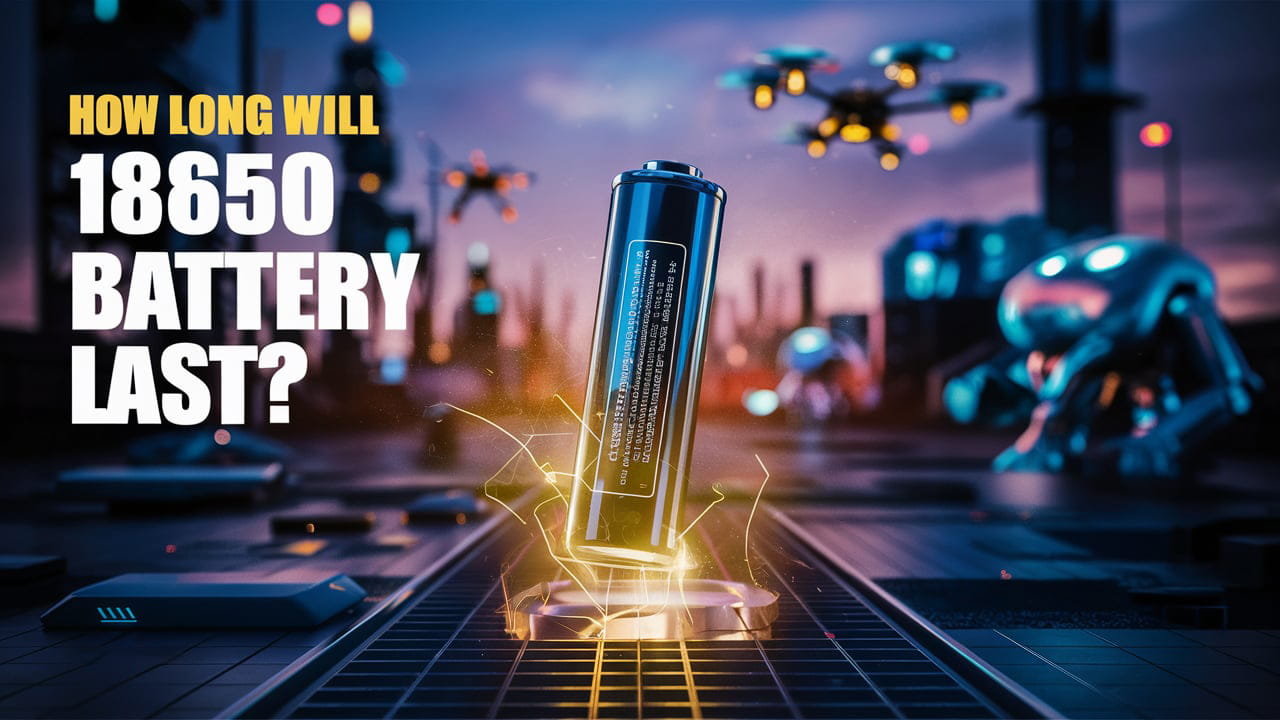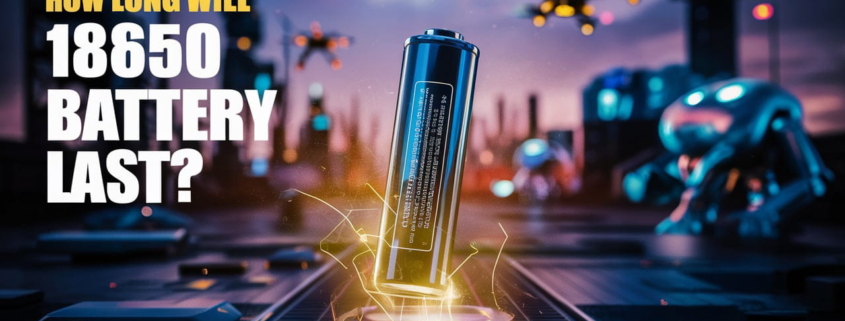How Long Will 18650 Battery Last? Everything You Need To Know
Lithium-ion 18650 batteries are incredibly common these days. You’ll find them powering vape pens, flashlights, power tools, and even electric vehicles.
But with frequent charging and discharging, these batteries don’t last forever. So a common question is:How long will 18650 battery last?
As a professional 18650 battery manufacturer, I did a deep dive into 18650 battery lifespan below. You’ll learn about cycle life, shelf life, and tips to extend runtime.
Let’s dive in!

What Is A 18650 Battery?
First, what exactly is a 18650 battery?
The 18650 refers to the size and shape:
- 18mm diameter
- 65mm tall
- Cylindrical
This battery format is standardized so that any 18650-size cell fits in compatible devices.
Inside, lithium-ion 18650s use similar battery chemistry as your smartphone or laptop.
Made up of:
- Anode (-)
- Cathode (+)
- Separator
- Electrolyte
As the battery discharges, lithium ions flow between the electrodes to produce electrical current and power your device.
Pretty cool!
Rechargeable 18650s allow these ion flows to reverse so you can use the cells over and over.
Now, onto that important question…
How Long Do 18650 Batteries Last?
There are two key battery life metrics for a 18650:
1. Cycle Life
This is the number of discharge/charge cycles before the battery capacity drops too low to be useful.
Most quality 18650s are rated for 300 to 500 full cycles. Going from 100% charge down to discharge cutoff voltage.
- 100% → 2.5-3V discharge → 100% (1 cycle)
So theoretically, a 18650 could last 1.5 to 2 years if cycled daily.
However, there are many variables here:
- Cell quality
- Discharge current
- Charging method
- Temperature
Cheap low-quality cells often have <100 cycle lifespan. Whereas high-performing 18650 cells can reach 1000+ cycles.
Temperature extremes, fast charging, and high discharge loads also reduce overall battery life. More on that later!
2. Shelf Life
Shelf life measures how long a battery holds charge when unused in storage.
Quality lithium-ion batteries hold ~80% capacity for up to a year during ideal storage conditions:
- 40-70°F temperature
- Stored at 40-50% charge
- Low humidity
However, after 2-3 years unused I’d expect capacity loss up to 20% per year.
Meaning a quality cell stored for 5 years likely needs replacing, even if never cycled.
Again, heat exposure rapidly accelerates this capacity loss while unused.
So when not using 18650 batteries for extended periods, cool dark storage extends shelf life.
Real-World 18650 Battery Lifespan
With typical real-world use, most vapers, flashlight users, and DIYers find 18650 battery replacement necessary every 1-2 years.
Some report lithium cells lasting 3-5 years. But capacity fading and voltage sag often make replacement worthwhile sooner.
Unless you have test equipment, gauging remaining battery life is guesswork.
Signs your 18650 may need replacing:
- Faster voltage sag under load
- Overheating
- Shortened runtime per charge
- Longer charging times
- Visible damage
While 300-500 cycles is common, that only translates to lifespan with context.
A vaper using 5 cycles daily gets less than 3 months span per battery!
Whereas a power bank in occasional use could take years to accumulate 500 discharge cycles.
In many cases, 2 year maximum lifespan per 18650 cell is realistic for everyday use.
How To Make Your 18650 Batteries Last
Lithium-ion batteries degrade with age no matter what. But you CAN slow down capacity loss.
Here are my top tips for maximizing 18650 battery life:
1. Buy Quality Cells From Reputable Battery Brands
Cheaper 18650 cells use lower-grade materials that tolerate fewer cycles.
Quality name-brand cells have better construction and chemical composition to enhance performance.
Stick to respected manufacturers like:
- Samsung
- Sanyo
- LG
- Panasonic
Check battery real versus fake comparisons before you buy. Counterfeit cells never last as long.
2. Charge At 0.5C Or Less
Charging too fast reduces cell lifespan over time.
0.5C is half thecapacity rate.
So if your 18650 battery is 3000mAh, charge at ≤1.5A current.
High-quality lithium battery chargers allow you to choose a lower charge rate.
Though slow charging extends cycle life, most users prefer faster 1C charges for convenience.
3. Avoid Heat Exposure
Lithium-ion batteries degrade faster in high temperatures.
Leaving devices like vapes in hot cars speeds up capacity loss.
Use ventilation and cooling methods to keep batteries under 120°F during operation and charging.
4. Prevent Full Discharges
Most devices cutoff discharge voltages between 2.5-3.0V to avoid over-draining.
Discharging your battery too low negatively impacts cycle life more than anything else.
Lithium battery protection circuits help prevent excess discharge.
5. Don’t Overcharge Over 4.2V
Maximum charging voltage differs between lithium-ion battery types.
But for 18650 cells, 4.2V is full charge. Charging to higher voltages risks damage and capacity loss over time.
Quality battery chargers stop at 4.2V. But if yours doesn’t, upgrade!
6. Rotate Multiple Batteries
Using multiple cells and rotating through them helps distribute wear more evenly.
Two cells cycled 250 times each performs better than one cell cycled 500 times.
Rotating batteries works great when you own multiple devices that use the same cells.
The Bottom Line
While most 18650 lithium-ion batteries are rated up to 300-500 cycles, real-world use often dictates replacing them yearly or so.
But buying quality cells and avoiding damage can potentially double their usable lifespan.
With care, storage protection, and smart charging, I’ve seen 18650 cells performing for 3-5 years in some cases!
How long will 18650 battery last? Plan on 1-2 years unless you optimize their care and charging.
I hope this 18650 battery lifespan guide gives you realistic expectations on runtime. Plus some battery health tips too!
Let me know if you have any other lithium battery life questions in the comments section.








